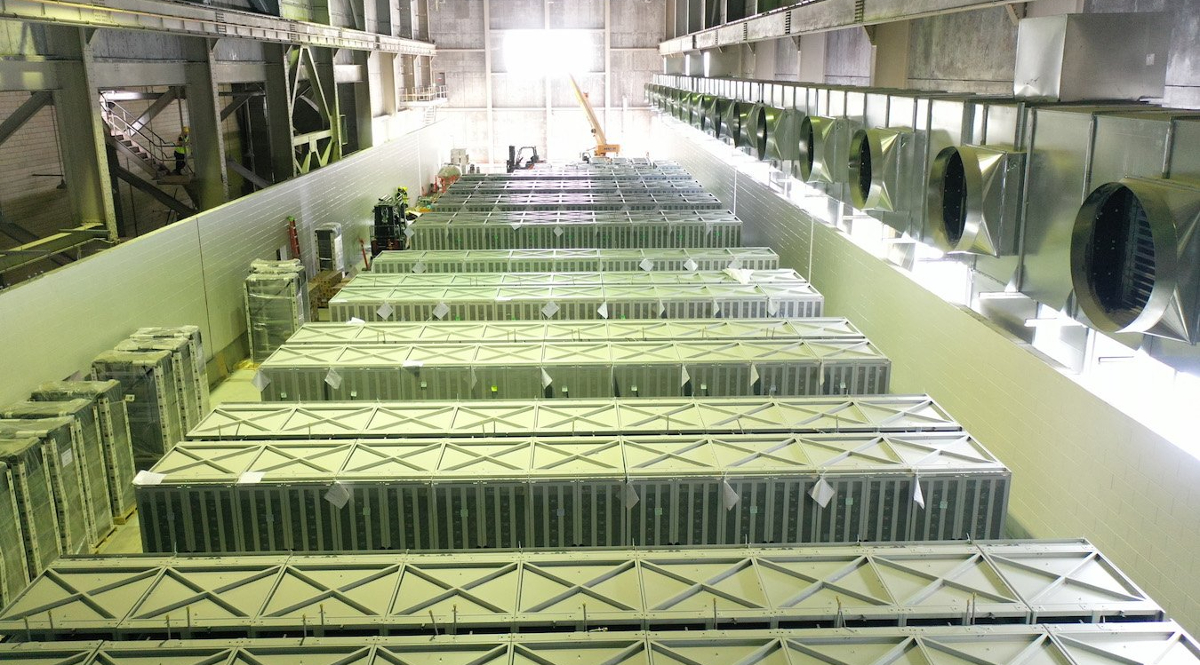
Sign up for daily news updates from CleanTechnica on email. Or follow us on Google News!
We are going to have to talk about battery storage and the Moss Landing fire.
The fire was located to the Vistra Storage facility within a building that was formerly a natural gas generation unit. Tesla has a storage facility nearby, but not within the same building.
You know I am a big fan of battery storage and EVs, but when this happens it is a huge wakeup call.
In the beginning, Tesla used NMC cells, sometimes sourced from outside, like from LG and Samsung. After a while, Tesla Powerpacks switched to LFP, for the same reason the rest of the industry switched. They are less volatile and prone to fire.
Not all the storage at Moss Landing was from Tesla. Much of the facility was made by Vistra, and we do not know yet what started the fire or how. There is some natural gas facility at the location. Undoubtedly, there will be a major investigation.
Cell Chemistries and Volatility
However, one thing I do know for sure is that battery pack fires are real and a concern. One thing you have to do when you are an advocate or a provider for something is manage the expectations and do some self regulation. If there is not enough internal regulation, then it brings bad publicity and recognition to the entire field. There is a right way and a wrong way to use advanced batteries, and correct application is required. The problem with lithium batteries, particularly more volatile types like LiCo (laptop cells), NCA (used primarily on the Model S and X), and NMC with high nickel content (a la 811 formulations) is that pack fires are hot and can consume an entire pack eventually. It is well known among professionals in this field that pack fires happen when one cell reaches critical conditions, and the heat from one can cause the same to others tightly packed nearby. This condition is called thermal runaway.
In the beginning of modern EV history, I realized that early LFP cells had the potential to create EVs that were far better than lead acid and NiMH could offer. When I did more work with EVs, I learned about pack fires and about LFP’s incredible resistance to punctures and other abuse. LFP can withstand nail puncture tests, battery terminal short tests, bullet tests, and bake tests. It does not explode, create fire, or remain burning once heat is removed. It does have some gas venting.
I also knew full well that other types did not have such resistance. I assumed that LFP would dominate despite being lower energy density, but it did not. Tesla found a different way by making its battery packs robust enough with better thermal management, and by using ablative material that slowed the rate of heat from fires. It also placed wire bond fused in series with all cells, so that if one shorted, the fuse would blow and protect the pack. This worked well enough for a single vehicle to allow occupants to escape in the event of a failure — like a punctured pack in the event of an accident — and produced cars with a lower rates of fire than internal combustion cars.
I did not anticipate this approach, and it is a good one for cars.
Where Battery Storage Stands
Enter storage. At this point, Tesla discovered that it could increase battery production volume and lower costs by using battery packs for storage and for EVs. This was a smart move. Unfortunately, that involved using the kinds of chemistries used for cars, which was NMC at the time. NMC was cheap enough per kWh to fit the bill, and Tesla originally used NMC for its Megapacks. However, it shifted to LFP in 2021.
Vistra completed the initial phase of its facilities in 2020. Tesla also provided a project at Elkhorn Slough at Moss Landing. Construction was started in June 2020, and the facility was inaugurated in July 2022.
By now, all major battery storage providers have switched to LFP.
For the Future
Here is the problem. If a car pack burns, that is where it stops. If a field full of battery storage catches fire, and the cells are volatile, it may spread to all of them. This is not good. Hindsight is 20/20. In my professional opinion, NMC or other volatile chemistries should not be used for utility storage. Going forward, storage has moved on to LFP, but the result of such fires should be further regulation that includes steps to mitigate fire spread and increase containment, if not outright limiting the volatility of cell types.
All this means that LFP, and particularly sodium-ion batteries and iron-air batteries with liquid electrolytes, will receive a huge boost due to even lower volatility and toxicity than LFP.
I addition to that, regulators should take a look at spacing between units, and fire spreading to limit the extent of fires.
Chip in a few dollars a month to help support independent cleantech coverage that helps to accelerate the cleantech revolution!
Have a tip for CleanTechnica? Want to advertise? Want to suggest a guest for our CleanTech Talk podcast? Contact us here.
Sign up for our daily newsletter for 15 new cleantech stories a day. Or sign up for our weekly one if daily is too frequent.
CleanTechnica uses affiliate links. See our policy here.
CleanTechnica’s Comment Policy

